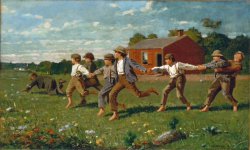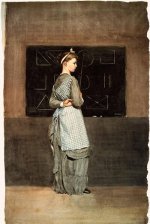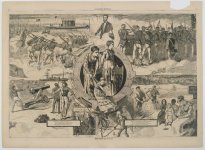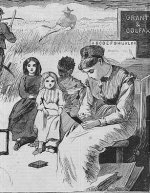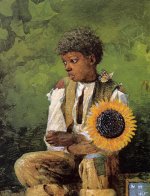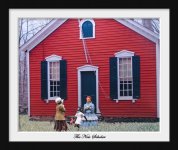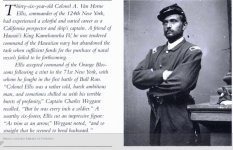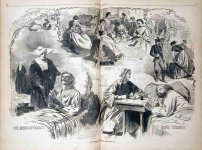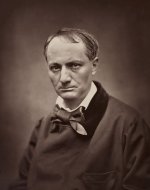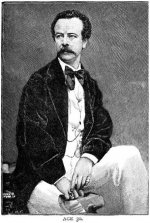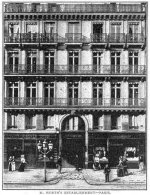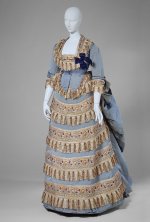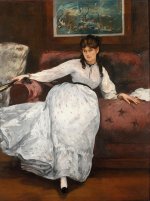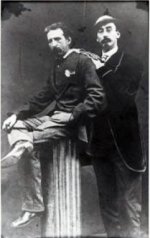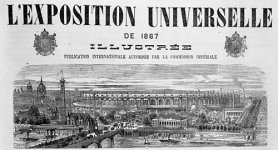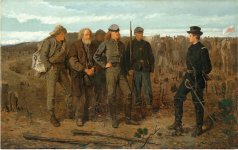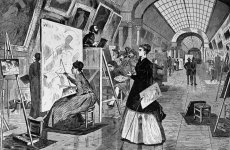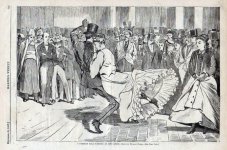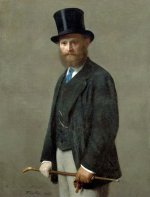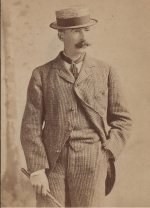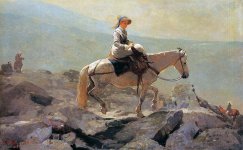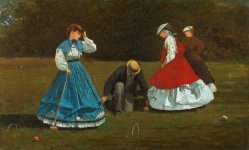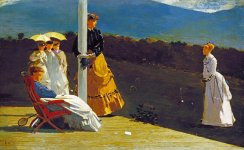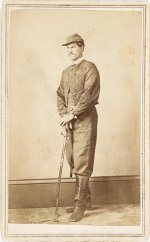PolarBear
Major
- Joined
- Feb 24, 2007
- Messages
- 6,706
After The Country School, Homer did a series of school related art works showing more images of the rural schools, their teachers and students. Perhaps the best known of these is Snap the Whip of 1872 which shows a group of boys playing a popular game during recess (another new addition to education at the time). In the background is the archetypal one room red schoolhouse which like the older country mill seen in The Old Mill was being already replaced by its urban multi-room and multi-story equivalent.
In 1877 Homer did his final school-related work a watercolor entitled Blackboard. I have included it here because it has a relationship to the increasing importance of training a future workforce for America’s growing industrial economy. The teacher is giving a lesson in the basic aspects of drawing to provide a foundation for those students who would require training it what were then called the Industrial Arts. The simple geometric forms were the preliminary steps towards mechanical drawing in a workshop or factory.
Illustrations:
Snap the Whip 1872 W. Homer
Blackboard 1877 W. Homer
In 1877 Homer did his final school-related work a watercolor entitled Blackboard. I have included it here because it has a relationship to the increasing importance of training a future workforce for America’s growing industrial economy. The teacher is giving a lesson in the basic aspects of drawing to provide a foundation for those students who would require training it what were then called the Industrial Arts. The simple geometric forms were the preliminary steps towards mechanical drawing in a workshop or factory.
Illustrations:
Snap the Whip 1872 W. Homer
Blackboard 1877 W. Homer


